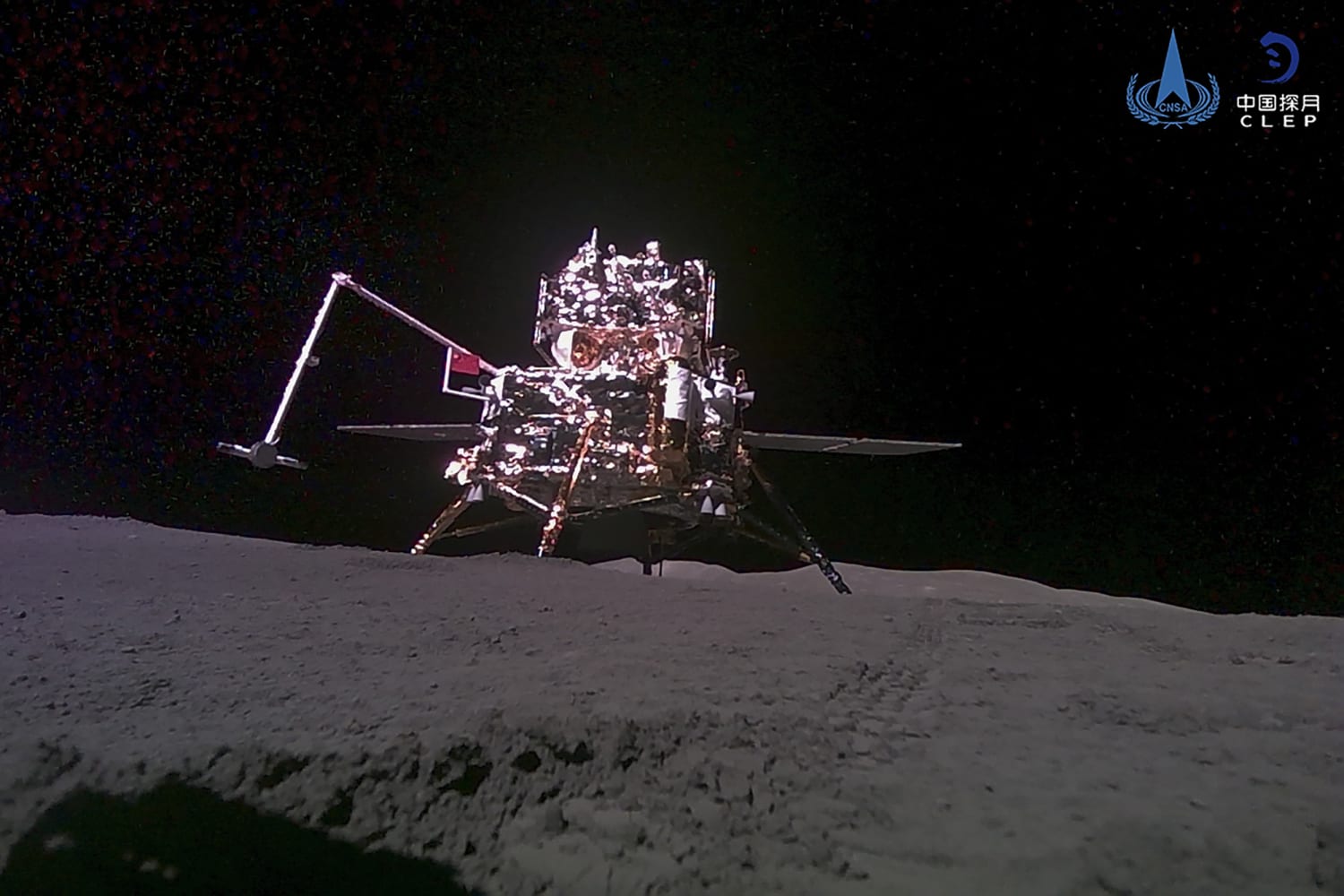In a global first, China’s Chang’e 6 probe returned to Earth on Tuesday with rock and soil samples from the little-explored far side of the moon.
The probe landed in the Inner Mongolia region of northern China on Tuesday afternoon local time.
While past U.S. and Soviet missions have collected samples from the moon’s near side, the Chinese mission was the first to collect samples from the far side.
Chinese scientists anticipate the samples will include 2.5-million-year-old volcanic rock and other material that scientists hope will answer questions about differences between the moon’s two sides.
The near side of the moon is what is seen from Earth, while the far side always faces outer space. Missions to the far side are challenging and risky because mission controllers on Earth have no way of directly contacting a spacecraft in that region.
Instead, they must send signals through a satellite that orbits the moon — a Chinese satellite has been in lunar orbit since March, and it relayed information to the spacecraft on the lunar surface.
Scientists have long been fascinated by the parts of the moon that permanently face away from our planet. The far side is known to have mountains and impact craters, contrasting with the relatively flat expanses visible on the near side. As such, samples from the far side could provide evidence of previously unstudied geological eras in the moon’s history, which could help researchers piece together how the solar system formed.
Scientists also hope the sample material bears traces of meteorite strikes from the moon’s past.
The Chang’e 6 probe launched into space on May 3 from the Wenchang Space Launch Site in China’s southern island province of Hainan.
About a month later, the spacecraft landed at a huge, ancient impact crater known as the South Pole-Aitken basin. The mission lasted a total of 53 days.
The China National Space Administration said the recovered probe will be flown to Beijing, where the samples will be stored and analyzed.
The samples “are expected to answer one of the most fundamental scientific questions in lunar science research: what geologic activity is responsible for the differences between the two sides?” said Zongyu Yue, a geologist at the Chinese Academy of Sciences, in a statement issued in The Innovation, a journal published in partnership with the Chinese Academy of Sciences.
China in recent years has launched multiple successful missions to the moon — key accomplishments for the country’s rapidly advancing space program. China has said it aims to land Chinese astronauts on the moon by 2030, and the country eventually plans to build a base on the lunar surface.
These ambitions have spurred competition with the U.S., India and other nations that have similar lunar ambitions.
China’s first moon landing came in 2013, when its Chang’e 3 mission made it the third country after the U.S. and the former Soviet Union to successfully put a spacecraft on the lunar surface.
In 2019, China became the first country to land a probe on the far side of the moon. The Chang’e 4 mission delivered a small rover named Yutu-2 to the surface to explore the Von Kármán crater within the moon’s South Pole-Aitken basin.
The following year, China returned to the moon’s near side, landing the Chang’e 5 spacecraft on a volcanic plain known as Oceanus Procellarum. The probe retrieved samples there and brought them back to Earth.
#Chinese #lunar #probe #returns #Earth #worlds #samples #side #moon,
#Chinese #lunar #probe #returns #Earth #worlds #samples #side #moon
